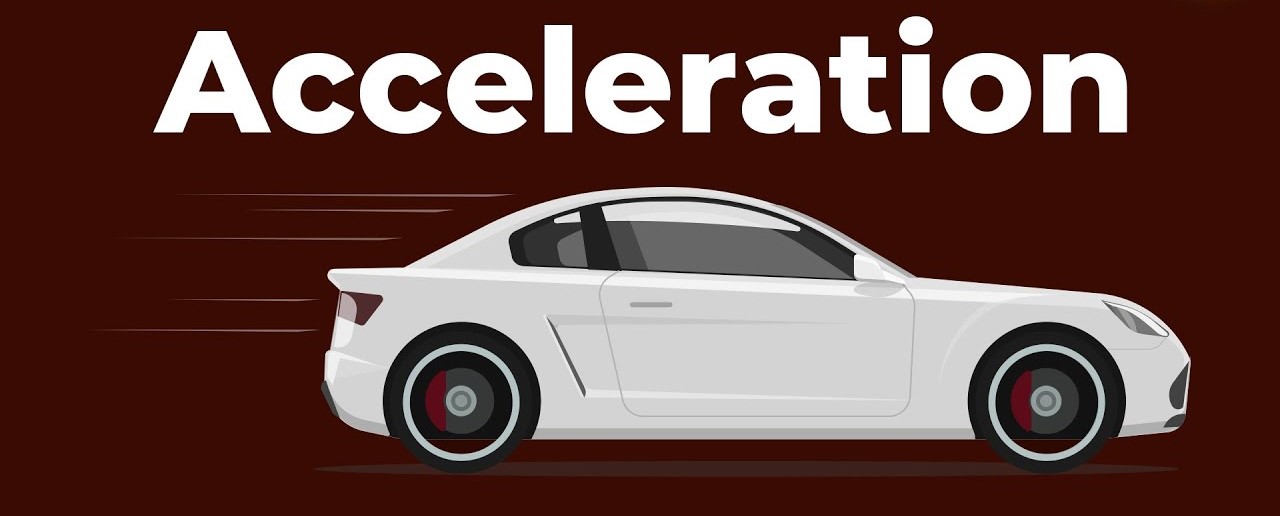
Acceleration is a fundamental concept in physics that describes how an object’s velocity changes over time. It plays a crucial role in understanding motion and the forces acting upon objects. While acceleration may seem like a straightforward concept, there are several astonishing facts that make it even more intriguing. In this article, we will explore 15 fascinating facts about acceleration that will blow your mind! From mind-boggling acceleration values to peculiar effects of acceleration on time and space, these facts will not only deepen your understanding of physics but also leave you in awe of the wonders of the universe. So, buckle up and get ready for a thrilling ride through the world of acceleration!
Key Takeaways:
- Acceleration is the rate at which an object’s speed or direction changes. It can be positive or negative, affects sports performance, and is crucial for understanding gravity and projectile motion.
- Acceleration is linked to force, mass, and distance traveled. It impacts fuel efficiency, causes stress on the human body, and even plays a role in Einstein’s theory of general relativity.
Acceleration is a Measure of Change in Velocity
Acceleration is defined as the rate at which an object changes its velocity over time. It determines how quickly the speed or direction of an object is changing.
Acceleration Can Be Positive or Negative
Acceleration can be positive, indicating an increase in speed, or negative, indicating a decrease in speed. It depends on the direction of the change in velocity.
Acceleration is Measured in Meters per Second Squared (m/s²)
The standard unit for acceleration is meters per second squared (m/s²). It represents the change in velocity per second.
Acceleration and Force are Related
According to Newton’s second law of motion, the acceleration of an object is directly proportional to the net force acting on it and inversely proportional to its mass. This relationship can be expressed as F = ma, where F is the force, m is the mass, and a is the acceleration.
Acceleration Due to Gravity is Constant
When an object falls freely under the influence of gravity, its acceleration is approximately 9.8 m/s². This value is known as the acceleration due to gravity and is denoted by the symbol g.
Acceleration is Essential for Circular Motion
In circular motion, an object continuously changes its direction, resulting in acceleration towards the center of the circle. This acceleration is called centripetal acceleration and is directed inward.
Acceleration Can Cause Stress on the Human Body
Rapid acceleration or deceleration can subject the human body to significant stress. For example, astronauts experience high acceleration during space shuttle launches, which can put strain on their bodies.
Acceleration Can Be Calculated Using the Change in Velocity and Time
Acceleration can be calculated using the formula a = (v – u) / t, where a is acceleration, v is the final velocity, u is the initial velocity, and t is the time taken.
Acceleration is Related to Distance Traveled
When an object accelerates uniformly, the distance it travels is directly proportional to the square of the time taken. This relationship is given by the equation d = ut + 1/2at², where d is the distance, u is the initial velocity, a is the acceleration, and t is the time.
Acceleration Can Affect the Perception of Weight
During rapid acceleration or deceleration, our bodies can experience a sensation of weightlessness or increased weight, depending on the direction of the acceleration. This effect is commonly felt in amusement park rides.
Acceleration Plays a Crucial Role in Sports
Acceleration is a key factor in various sports. Athletes rely on their ability to accelerate quickly to gain an advantage over their opponents, whether it’s in sprinting, basketball, or soccer.
Acceleration Can Impact Fuel Efficiency in Vehicles
Rapid acceleration and sudden stops can significantly reduce the fuel efficiency of vehicles. By maintaining a smooth and gradual acceleration, drivers can improve their mileage and save on fuel costs.
Objects of Different Mass Accelerate Differently
Objects with a smaller mass will accelerate more quickly than objects with a larger mass, under the same applied force. This observation is described by Newton’s second law of motion.
Acceleration Can Lead to Projectile Motion
When an object is launched at an angle, it experiences both horizontal and vertical acceleration. This combination of forces results in projectile motion, such as the trajectory of a thrown football or a projectile fired from a cannon.
Acceleration is Fundamental to Einstein’s Theory of General Relativity
In Einstein’s theory of general relativity, acceleration is linked to the curvature of spacetime. Massive objects, such as planets, create gravitational fields that cause the acceleration of nearby objects.
Conclusion
Acceleration is a fascinating concept in physics that plays a crucial role in describing the motion of objects. From understanding the concept of acceleration to exploring its various applications, the world of acceleration holds many astonishing facts. We have delved into some of the most intriguing aspects, such as the relationship between acceleration and velocity, the impact of gravity on acceleration, and the concept of negative acceleration.Additionally, we explored the connections between acceleration and forces, as well as some real-life examples illustrating the importance of acceleration in everyday life. These include the incredible speed of Formula One cars, the force experienced during roller coaster rides, and the effects of acceleration on space travel.By diving into these astonishing facts about acceleration, we can enhance our understanding of the fundamental principles that govern motion in the universe. From the simplest objects to the grandest cosmic phenomena, acceleration remains a key player, unraveling the mysteries of the physical world.
FAQs
Q: What is acceleration?
A: Acceleration is the rate at which an object changes its velocity. It is a vector quantity, representing both the magnitude and direction of how quickly an object’s velocity is changing.
Q: How is acceleration related to velocity?
A: Velocity is the rate at which an object changes its position, while acceleration measures the rate at which an object changes its velocity. In other words, acceleration is the derivative of velocity with respect to time.
Q: Can acceleration be negative?
A: Yes, acceleration can be negative. Negative acceleration, also known as deceleration, means an object is slowing down. It indicates a change in velocity in the opposite direction of its initial motion.
Q: How does gravity affect acceleration?
A: Gravity affects acceleration by exerting a force on objects. In a free fall scenario, where only gravity acts upon an object, the acceleration due to gravity is constant. On the Earth’s surface, this acceleration is approximately 9.8 meters per second squared.
Q: What are some real-life examples of acceleration?
A: Examples of acceleration in everyday life include the takeoff of an airplane, the rapid speed of a car when the gas pedal is pressed, and the sudden stop of a running back in football. Acceleration is present in numerous activities and phenomena.
Acceleration plays a crucial role in our everyday lives, from the thrill of racing to the fundamental laws of physics. If you found these astonishing facts about acceleration captivating, why not explore the cutting-edge technology behind the Zero DSR ZF14.4 modular electric motorcycle? This innovative machine combines power, efficiency, and sustainability, offering a glimpse into the future of transportation.
Was this page helpful?
Our commitment to delivering trustworthy and engaging content is at the heart of what we do. Each fact on our site is contributed by real users like you, bringing a wealth of diverse insights and information. To ensure the highest standards of accuracy and reliability, our dedicated editors meticulously review each submission. This process guarantees that the facts we share are not only fascinating but also credible. Trust in our commitment to quality and authenticity as you explore and learn with us.


